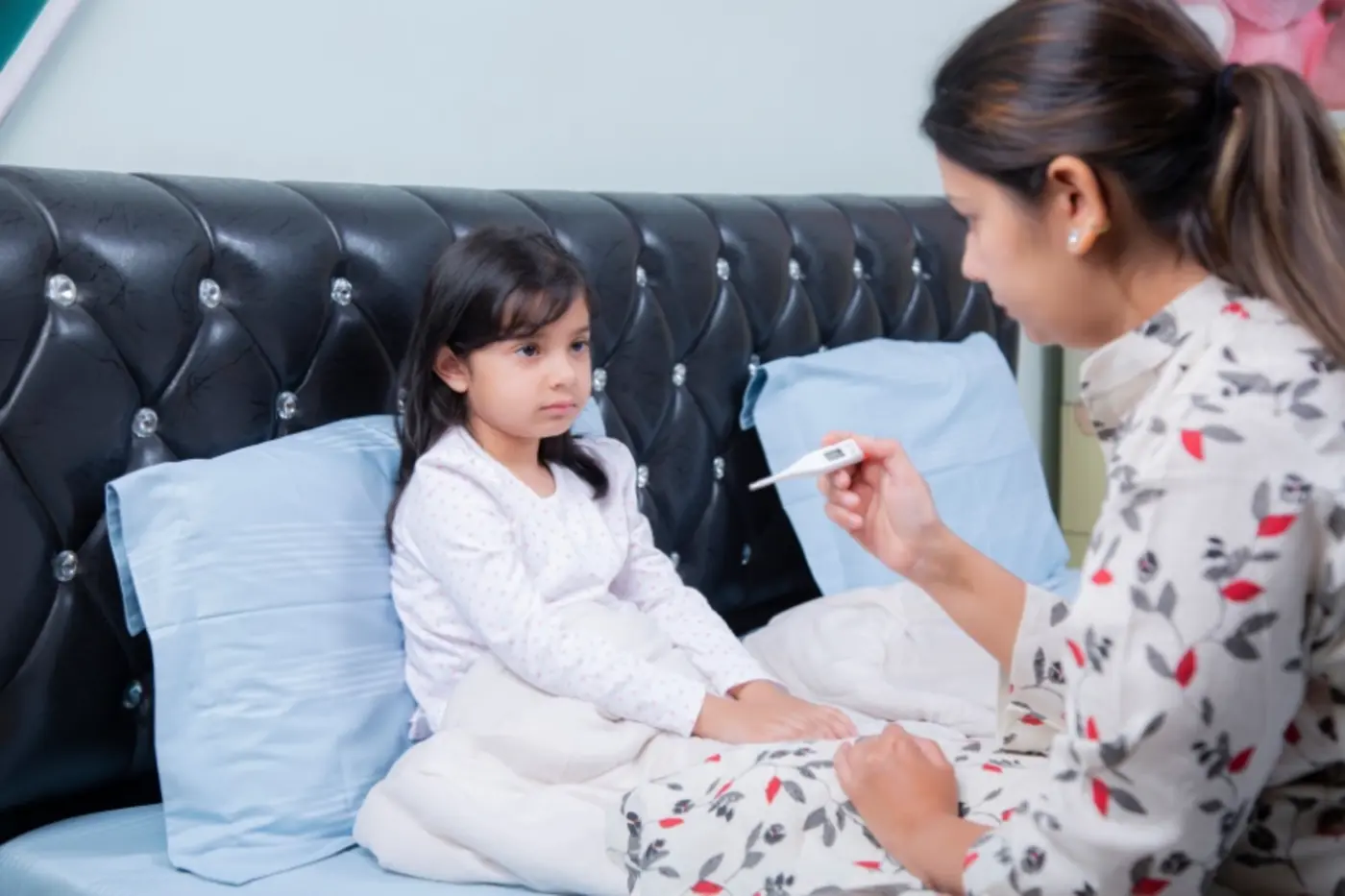Topics
Having a child come down with a fever can be an alarming thing for parents, especially first-time mums and dads.
What temperature is considered too high? Should you take your little one to the doctor immediately? In this article, Dr. Khamini Ramanujam, our resident consultant Paediatrician shares her insights, and addresses the concerns when it comes to fevers in children.
Children are considered to have a fever when their temperature hits 38°C (or 100.4°F). This happens when the body’s internal ‘thermostat’ or hypothalamus in the brain raises the body temperature above normal levels – typically as a natural defense to fight an infection. It is recommended for parents to use digital thermometers to take readings, as these are the quickest and most accurate. For newborns up to three months old, it is best to take temperatures rectally (in the anus). For infants aged between three months and three years, it is recommended to get readings rectally, from the ears or armpits. For children aged five and above, it can be done orally, from the ears or armpits.
As fevers are a natural part of growing up, it is important for parents to know when it is something they can manage at home, and when they should seek urgent medical advice. It is imperative to consult your doctor if the temperature hits 38°C or higher for infants younger than three months, or 39°C for an older child.
Symptoms to look out for are those that are unlike any your child have had before, such as a refusal of feeds, inactivity, lasting diarrhoea and vomiting, and showing signs of dehydration (like lethargy, inattentiveness, a dry mouth, reduced peeing or lack of tears while crying). Children might also be irritable, have difficulty breathing, have seizures, have paler than usual skin colour or experience ear-aches, a sore throat, rashes and pain while urinating.
Should these issues persist and the fever does not subside after 48 hours, or if your child has a chronic medical problem, you should consult a doctor immediately.
Some of the most common causes of fever in children in Malaysia are viral or bacterial infections. It could also be a result of immunisation, teething, malignancy or inflammatory conditions like Kawasaki Disease or connective tissue disease. Children can develop terrible seizures if their fever is high and remain untreated. The two most serious infections here are meningitis and septicaemia (blood infection) – and while uncommon, symptoms can quickly worsen and urgent medical attention is needed.
But sometimes, a fever can be caused by something as simple as overdressing (particularly in young infants) or the child being in a hot environment. It is probably not serious if the child is still having normal activity and play, is alert, eating and drinking well, and looks well when the temperature settles.
Additionally, if your feverish child is fussy or uncomfortable, they can be given paracetamol along with fluids such as water, soups, juices, ice-lollies or jello to avoid dehydration. Do not force them to eat if they do not feel like it, and let them eat what they want in moderation. Ensure they get adequate rest, so it is best to keep them out of school, nursery or daycare. Keep them in a cool environment and avoid under or over-wrapping them in clothing.
Children will inevitably develop fevers during their childhood and most will recover and return to their normal selves within a few days. But for infants younger than three months or children with constant diarrhoea or vomiting, it is better to be safe and consult a doctor.
